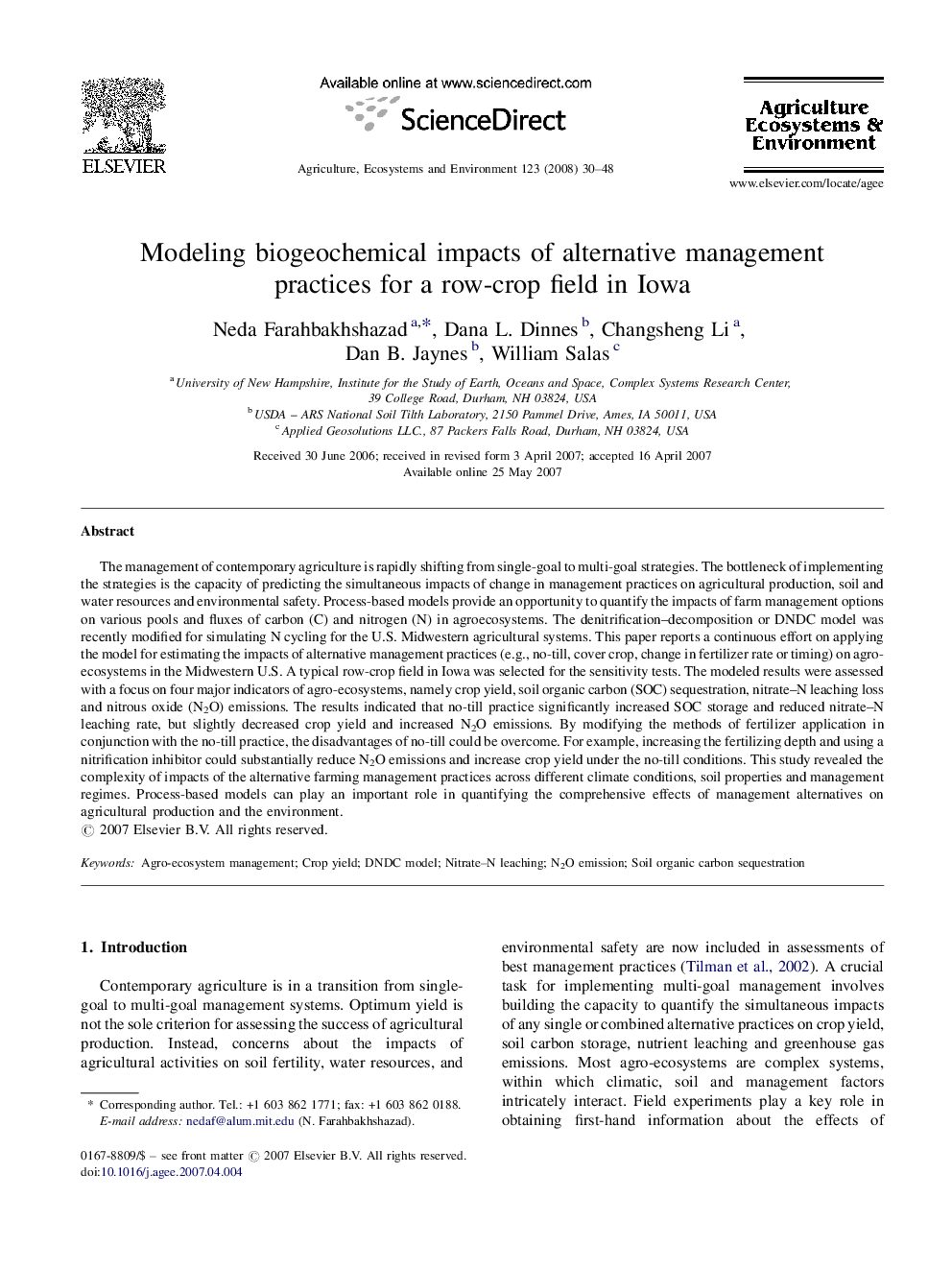| Article ID | Journal | Published Year | Pages | File Type |
|---|---|---|---|---|
| 2415756 | Agriculture, Ecosystems & Environment | 2008 | 19 Pages |
The management of contemporary agriculture is rapidly shifting from single-goal to multi-goal strategies. The bottleneck of implementing the strategies is the capacity of predicting the simultaneous impacts of change in management practices on agricultural production, soil and water resources and environmental safety. Process-based models provide an opportunity to quantify the impacts of farm management options on various pools and fluxes of carbon (C) and nitrogen (N) in agroecosystems. The denitrification–decomposition or DNDC model was recently modified for simulating N cycling for the U.S. Midwestern agricultural systems. This paper reports a continuous effort on applying the model for estimating the impacts of alternative management practices (e.g., no-till, cover crop, change in fertilizer rate or timing) on agro-ecosystems in the Midwestern U.S. A typical row-crop field in Iowa was selected for the sensitivity tests. The modeled results were assessed with a focus on four major indicators of agro-ecosystems, namely crop yield, soil organic carbon (SOC) sequestration, nitrate–N leaching loss and nitrous oxide (N2O) emissions. The results indicated that no-till practice significantly increased SOC storage and reduced nitrate–N leaching rate, but slightly decreased crop yield and increased N2O emissions. By modifying the methods of fertilizer application in conjunction with the no-till practice, the disadvantages of no-till could be overcome. For example, increasing the fertilizing depth and using a nitrification inhibitor could substantially reduce N2O emissions and increase crop yield under the no-till conditions. This study revealed the complexity of impacts of the alternative farming management practices across different climate conditions, soil properties and management regimes. Process-based models can play an important role in quantifying the comprehensive effects of management alternatives on agricultural production and the environment.
